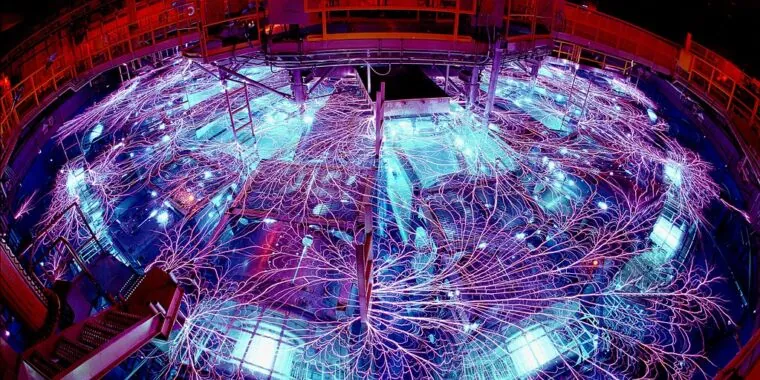
Unlocking the Power of Nuclear Physics: Can We Divert Asteroids with Radiation?
2024-09-24
Author: Yan
Introduction
In a groundbreaking study that resembles something out of a sci-fi film, scientists are exploring a stunning possibility: using radiation from nuclear reactions to divert asteroids that could threaten Earth. The concept might sound like a tall tale, but experts believe it’s entirely feasible—and it doesn’t involve the kind of nuclear explosions you might imagine.
The Innovative Approach
Instead of deploying an actual nuclear bomb that would obliterate an asteroid, researchers at Sandia National Laboratories have been investigating a different method that takes advantage of a nuclear weapon's radiation. The approach hinges on the idea that when a nuclear device is detonated, its intense radiation can vaporize a portion of an asteroid's surface. This vaporization creates a brief, high-temperature atmosphere on one side of the asteroid, which generates enough pressure to change its trajectory—enabling it to safely pass by Earth.
Experimental Setup
The team employed the incredible capabilities of the Z machine, a state-of-the-art apparatus known for producing intense bursts of X-rays capable of vaporizing rock. Their research indicates that this method could potentially redirect asteroids up to 4 kilometers in diameter—impressive given that such celestial bodies could carry the cataclysmic potential to disrupt life on Earth.
Replicating the Asteroid Experience
But how do they replicate the asteroid experience? Instead of merely measuring the force exerted on a stationary rock, these innovative scientists got creative. They kept rock samples, composed of either quartz or fused silica, suspended in a manner that mimicked the weightlessness of space. Using ultra-thin foils that vaporized upon the X-ray burst, they created the perfect conditions to observe how the sudden vaporization influenced the rock's movement.
Tracking Motion
With a laser interferometer positioned strategically, they could track the rock's motion without the complications introduced by gravity. The results were promising, offering new hope for planet defense strategies that could one day shield Earth from potential asteroid impacts.
Future of Space Protection
This research opens the door to discussions about the future of space protection. As human activity continues to expand into space, understanding how to deal with hazardous asteroids could become critical. Imagine a world where we can neutralize cosmic threats before they even enter our atmosphere—a scenario that brings both excitement and responsibility.
Conclusion
As scientists continue to investigate this remarkable intersection of nuclear physics and planetary defense, we should keep an eye on the developments. Could this research change the narrative of how we protect our planet? The stakes are high, and the countdown has begun. Stay tuned!




 Brasil (PT)
Brasil (PT)
 Canada (EN)
Canada (EN)
 Chile (ES)
Chile (ES)
 España (ES)
España (ES)
 France (FR)
France (FR)
 Hong Kong (EN)
Hong Kong (EN)
 Italia (IT)
Italia (IT)
 日本 (JA)
日本 (JA)
 Magyarország (HU)
Magyarország (HU)
 Norge (NO)
Norge (NO)
 Polska (PL)
Polska (PL)
 Schweiz (DE)
Schweiz (DE)
 Singapore (EN)
Singapore (EN)
 Sverige (SV)
Sverige (SV)
 Suomi (FI)
Suomi (FI)
 Türkiye (TR)
Türkiye (TR)